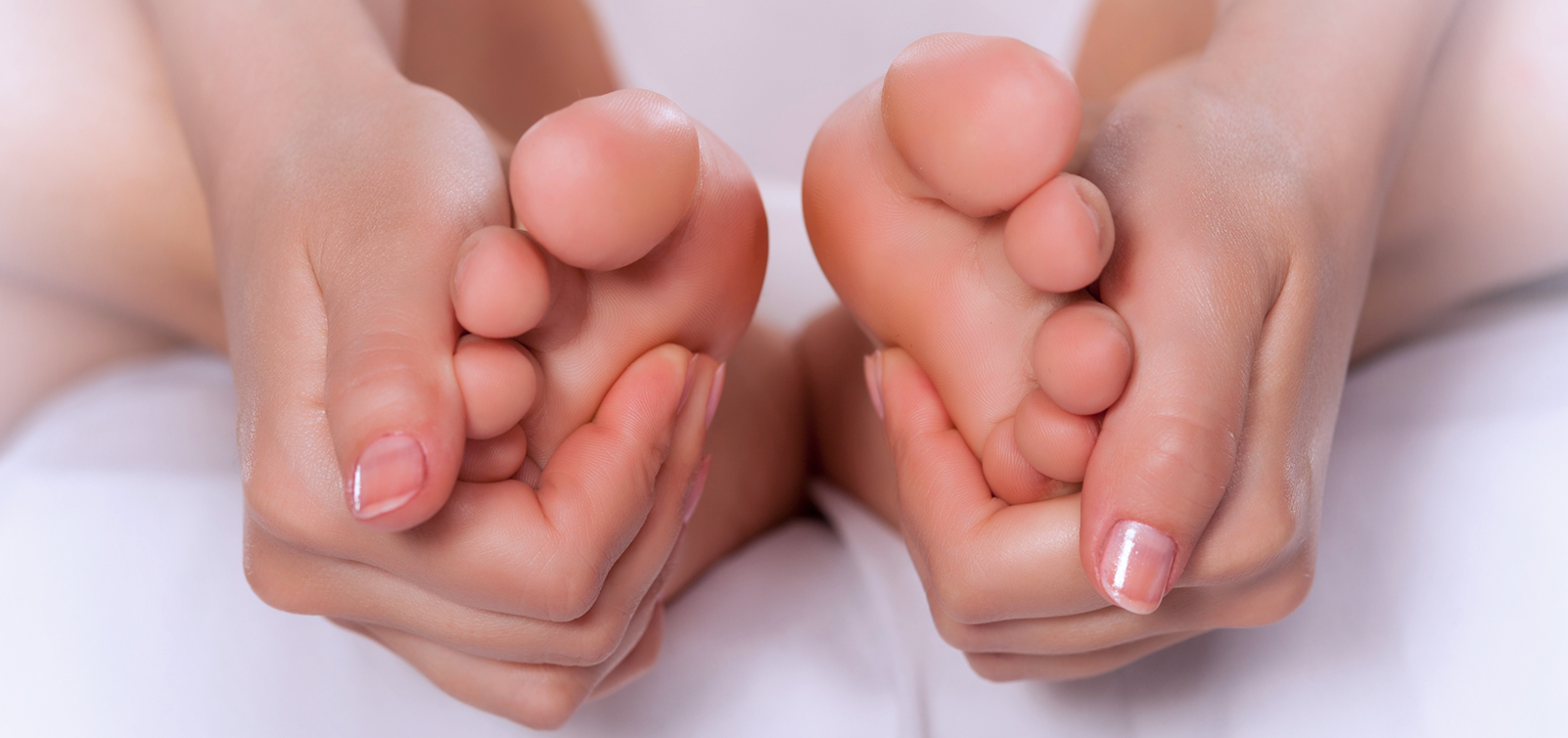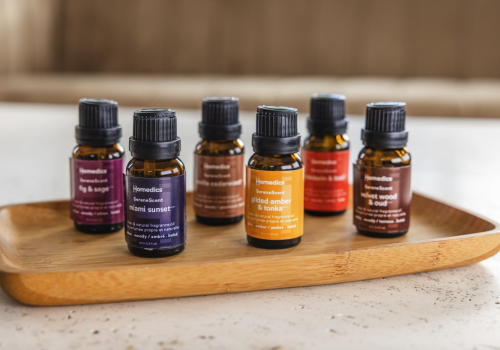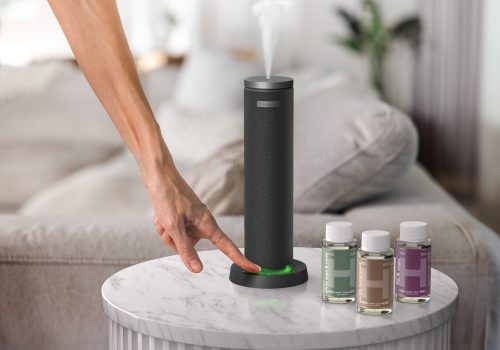Foot Detox: What Does It Do & How Does It Work?
Foot detox is a trendy detoxification treatment that claims to remove toxins from your body through the bottoms of your feet. There are several types of foot detox products that advertise toxin removal and other unproven health benefits.
Although a foot detox won’t technically rid your body of toxins, a detox foot bath can bring a soothing feeling to your skin and your mind as part of a relaxation routine.
Let’s explore the health claims behind foot detox, check in with scientific research, and look for ways to do DIY foot detox at home.
What Is Foot Detox?
Foot detox is a detoxification technique that some believe can remove toxins and pollutants from the body. Scientific research has not yet found evidence that foot detox achieves detoxification or more general health benefits. However, foot detox using warm water or an ionic foot bath can be a soothing relaxation technique.
During a foot detox, you’ll enjoy the soothing effects of warm water foot soaks and gentle exfoliation. You may experience temporarily softer-feeling skin in the process.
How Does Foot Detoxing Work?
Foot detoxing typically uses a foot bath, detox pad, scrub, or foot mask that claims to remove toxins from your body through your feet. Claims that these toxins have negative effects on your health are also unproven, but detox remains a popular health trend.
The most common type of foot detox, which uses an ionic foot bath, involves filling a small tub with warm water and applying a positive electrical charge to ionize the water. Although the belief that this process can pull negatively-charged toxins out of the body is unproven, using an ionic foot bath is often a soothing experience.
Foot baths (ionic or otherwise) offer simple relaxation for tired, tense, or overworked feet. Some foot baths use bubbles to gently massage feet for additional relaxation. You can also choose a foot bath that features a sea grass surface and a warming element for to better suit your comfort preferences.
Often used in combination with a foot bath, a scrub with an exfoliating brush or pumice stone can also help feet feel softer. Exfoliation—the process of removing dead skin cells from the outermost layers of your skin— is one benefit of the types of foot detox that involve foot scrubs and using exfoliating scrubs after a foot mask. Again, it doesn’t detoxify your body, but exfoliating can lead to a soothing, softer feeling on your feet.
Why the Water in a Foot Bath Changes Color
A common misconception is that the changing color of the water is the result of the toxins it is drawing out of your feet. While some foot detox products advertise this change as proof that they’re working, the water in an ionic foot bath actually changes color for several unrelated reasons.
Dirt from your feet and other impurities in the water—such as minerals in tap water—can cause the water to change color. Some of the most dramatic color changes to dark brown happen because the metal electrodes that ionize the water corrode during the reaction. The corroded ions change the water’s color, not toxins from your body. One common side effect of foot detoxing, an unpleasant smell emanating from the water or pad, is also not a sign of its effectiveness.
Common Health Claims About Foot Detox
People associate foot detoxing with various health claims, including removing heavy metals from the body, reducing swelling, boosting the immune system, and helping improve heart health. Scientific research has not found evidence that foot detoxing produces any of these benefits. There’s also no evidence to show that ionic foot baths or other foot detox methods effectively remove toxins from the body.
In one study using 30-minute foot bath sessions, researchers saw no indications that the process drew toxins out through participants’ feet.7
Your body already has two effective toxin filters: your liver and your kidneys. When your liver and kidneys are functioning properly, you don’t need to rely on external detox methods to remove toxins and waste from your body.8
Foot Detox: General Benefits
The lack of direct health benefits doesn’t mean that foot detox is entirely without benefits, however. People who use foot baths often report that the treatment helps them feel relaxed and refreshed. As part of a healthy lifestyle, foot baths may leave you feeling a soothing effect that promotes relaxation.
Types of Foot Detoxes
Common types of foot detox include the following:
Ionic Foot Bath Soak
An ionic foot bath soak is a device that electrically charges water to ionize it. This type of foot detox often results in discolored water. The water alone provides a relaxing sensation for some people, and a foot bath that features a warming element or massage pads may help soothe tired feet.
Foot Scrub
Using a foot scrub is a simple form of detox that helps exfoliate the skin on the bottom of your feet, removing dry and dead layers of skin. Exfoliating with a foot scrub removes dead skin cells and can leave your skin feeling temporarily softer.
Foot Detox Pads
Foot detox pads claim to absorb toxins from the soles of the feet, but this isn’t supported by scientific research. The discoloration of detox foot pads also doesn’t indicate any health benefits.
Foot Detox Masks
Foot detox masks commonly use activated charcoal or clay to treat dry or cracked feet. These masks don’t eliminate toxins, but they may help your feet feel temporarily softer. When used with a pumice stone, you can exfoliate layers of dead skin on your feet.
How to Do a DIY Foot Detox at Home
You can create your own detox foot bath easily to help yourself relax.
We’ve put together some popular recipes for doing a DIY foot detox session right at home.
- Epsom Salt Soak
Epsom salt, a magnesium sulfate compound, makes for a soothing foot soak in a tub of warm water. Add about 1/2 cup of Epsom salt to a tub filled with enough water to fully cover your feet.
A 15- to 30-minute soak exposes your skin to the magnesium in the Epsom salt, which, as part of a healthy lifestyle, may bring headache relief and increase serotonin production. Epsom salt also has anti-inflammatory properties that may help reduce swelling.
- Charcoal Foot Mask
A charcoal foot mask may offer some of the same benefits as charcoal face masks. A charcoal mask may help cleanse the skin of impurities and cause pores to appear smaller, making skin look smoother.
While activated charcoal is highly effective at filtering toxins and pollutants from the air, its ability to remove them from the skin is unproven.
Although it won’t detoxify, a charcoal foot mask could be a refreshing part of your exfoliation routine. After applying the activated charcoal mask to the soles of your feet and letting it dry, use an exfoliating brush to scrub away the mask along with dry, dead skin.
- Apple Cider Vinegar Soak
Acetic acid, the active ingredient in apple cider vinegar, has the effect of gradually softening thick and callused skin. This exfoliating effect may help relieve cracked skin on your feet. Since apple cider vinegar is also antibacterial, it can help kill odor-causing bacteria, too.5, 9
To do a DIY foot soak with this ingredient, combine equal parts warm water and apple cider vinegar—just enough to cover your feet in a basin. You can also add a tablespoon of Epsom salt to the mixture. Then, soak your feet for 15 to 20 minutes. Finally, you can exfoliate your feet by scrubbing them with a pumice stone or exfoliating brush.
- Baking Soda and Sea Salt Foot Soak
A warm soak with baking soda and sea salt can be soothing, help relax your mind, and make your skin feel softer. The sea salt in the mixture contains potassium, calcium, and other minerals that produce this feeling.10 Most of all, though, a soak in a warm bath with baking soda and sea salt, accompanied by some soothing sounds and your favorite candles, can help promote relaxation.
To make a foot soak at home, add about 4 tablespoons each of baking soda and sea salt to a basin with enough warm water to cover your feet. Soak for 15 to 20 minutes.
- Bentonite Clay Foot Mask
Bentonite has been shown to help alleviate hand dermatitis, skin lesions, and diaper rash. It might also have antibacterial effects. These benefits of bentonite may act as a restoring treatment for your feet.6
You can make a DIY foot mask at home using bentonite clay, apple cider vinegar, and warm water. Mix about 3 tablespoons of bentonite clay with 1 to 2 tablespoons each of water and apple cider vinegar. Then, rub the mask onto the soles of your feet and let it dry. Finally, you can scrub it off to exfoliate your feet.
Relax With a Soothing Foot Bath
While a detox foot bath or pad won’t necessarily remove toxins from your body, it may be a soothing part of a regular relaxation routine.
Look for a foot bath or a spa machine that features comfortable padding, massaging bubbles, and a heating function to keep the water warm and calming.
Medical Disclaimer: This content is provided for informational purposes only and not intended to be a substitute for professional medical advice, diagnosis or treatment.

Sources
1. https://health.clevelandclinic.org/7-things-you-probably-didnt-know-about-epsom-salt/
2. https://pubmed.ncbi.nlm.nih.gov/29334449/
3. https://pubmed.ncbi.nlm.nih.gov/19944540/
4. https://share.upmc.com/2018/03/benefits-charcoal-face-mask/
5. https://www.wellandgood.com/apple-cider-vinegar-foot-soak/
6. https://www.ncbi.nlm.nih.gov/pmc/articles/PMC5632318/
7. https://www.hindawi.com/journals/jeph/2012/258968/
9. https://pubmed.ncbi.nlm.nih.gov/29379012/
10. https://www.cosmopolitan.com/style-beauty/beauty/g32948546/best-bath-soaks/





